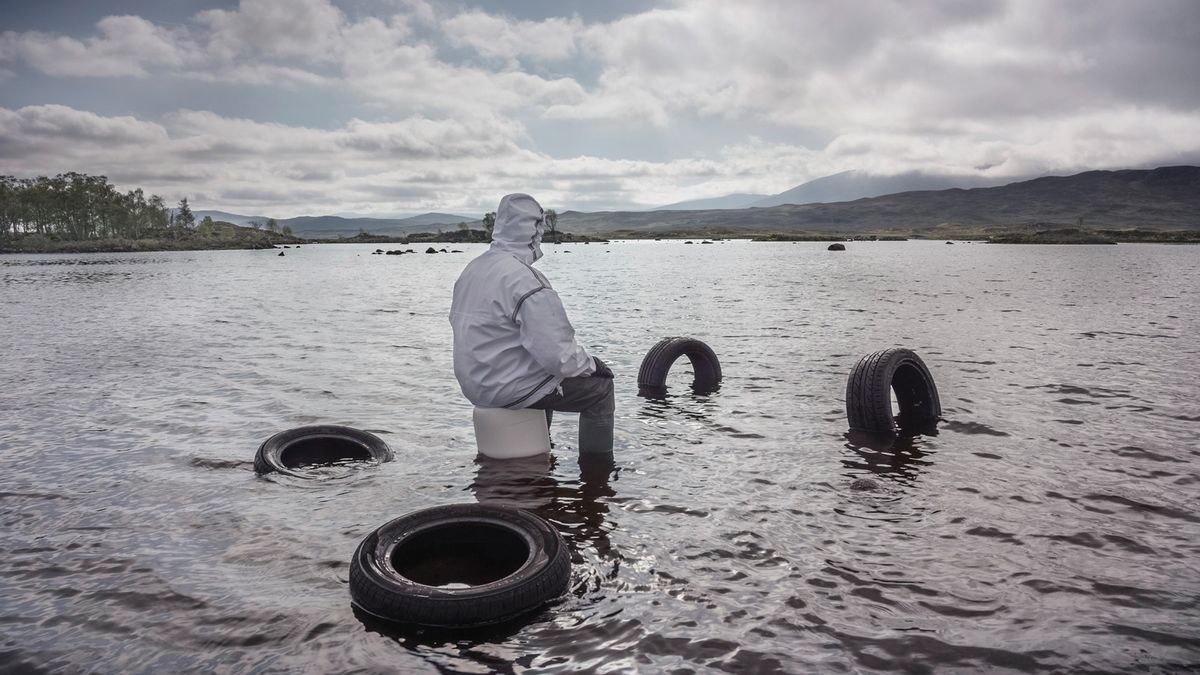The London-born film-maker John Akomfrah is not one to shy away from difficult subjects. Since the early 1980s, he has tackled issues ranging from colonialisation to the fate of migrant diasporas worldwide. In 2015, he took on the whaling industry and its barbaric practices in a three-screen film installation, Vertigo Sea, which was shown that year in Okwui Enwezor’s exhibition, All the World’s Futures, at the Venice Biennale. His latest project is an epic undertaking, even for Akomfrah. Purple, on show in the Curve at the Barbican (until 7 January 2018), is a six-channel video installation that gives the artist’s own nuanced, penetrating take on the insidious threat of climate change. “[T]echnically, physically and psychologically, this is probably the most challenging thing I’ve ever done,” Akomfrah recently told The Art Newspaper.
Katharina Grosse’s latest spray-painting installation, This Drove My Mother up the Wall (until 3 December) adds a riot of colour to the white walls, doors and even part of the floor of the South London Gallery. As befits the title, walking inside it feels a little like wish fulfilment—a cheeky comeback to your mother’s warnings not to draw on the walls at home. Check out the film in the upper gallery, The Women Artists (2016) by Claudia Müller, for a glimpse into Grosse’s supersized painting technique and a guided tour around her fantasy exhibition of eight other female artists. The strong all-women line-up is completed by two daily screenings of The Gleaners and I (2000), a feature-length documentary by Agnès Varda, the only female director of the French New Wave.
Nick Goss manages that rare thing for a painter: he creates atmospheric, improvised scenes that hint at a narrative without appearing forced or affected. Narrative painting has been unfashionable for years, but Goss’s thinly painted, layered works revel in stories and a strong, yet intangible, sense of time and place. This series of work in De Ramp (until 6 November) at Josh Lilley, stems from the artist’s memories of childhood summers in Zeeland, a Dutch province prone to flooding and devastated in 1953 by a flood known as De Ramp (The Disaster). Goss started making drawings from a book of photographs of the flood two years ago after reading JG Ballard’s The Drowned World, describing a post-apocalyptic flooded London.


